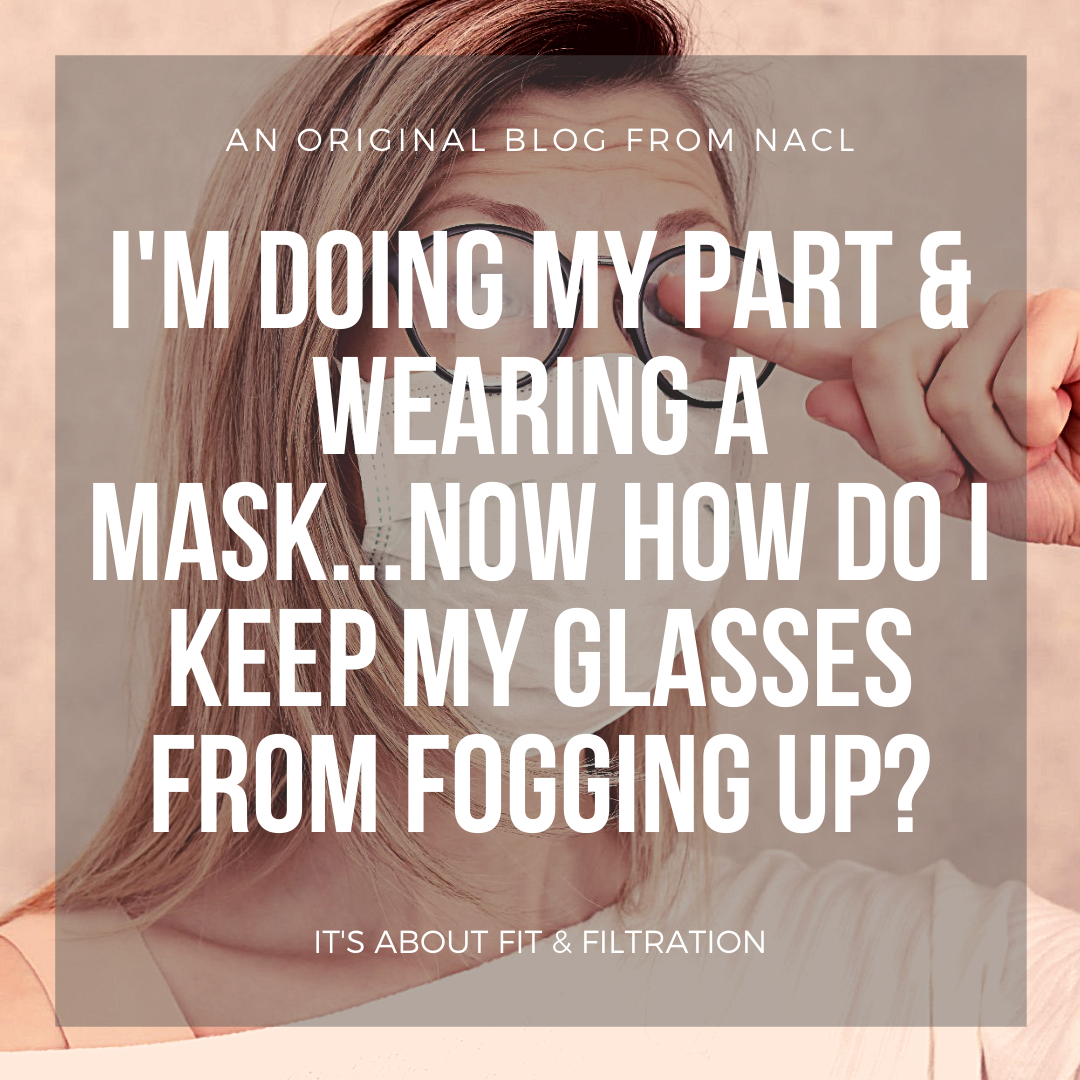I’m doing my part and wearing a mask…Now how do I keep my glasses from fogging up?
Now that many states have instituted a “best practice” policy of wearing surgical masks in public spaces, a new problem has sprung up temporarily blinding many of us who wear eyeglasses or sunglasses on a regular basis. This issue has plagued eyeglass wearing medical workers, as well as goggle-wearing skiers, and outdoor athletes of all kinds.
The obvious question is why does it happen? According to Tom Margrain, a leading researcher at Cardiff University’s School of Optometry and Vision Sciences, “when a spectacle wearer enters a warm environment after having been in a cooler one, his/her spectacles may ‘mist up’ due to the formation of condensation on the lens surface.” He went on to say that polycarbonate lenses demisted more rapidly than those made of glass.
So, if your eyeglasses are fogging up when you put on a face mask, it’s due to the fact that the warm, moist air that you exhale is being flowing upwards towards your glasses. To prevent or drastically minimize the fogging, you need to block your breath from reaching your lenses.
Some sources would recommend cleaning your lenses with soapy water and letting them air dry, thus leaving the surfactant or soap dried on the surface. The thought behind this method is sound as the reduced surface tension of the lens forces the liquid droplets to spread evenly on the lens making the fog a more transparent layer.
The issue here is that leaving your optically clear lenses with a layer of soap scum on them isn’t too much more effective than just letting them fog up in the first place.
Another method that doesn’t involve leaving a soap residue on your lenses, is to fit your face mask, to prevent your exhaled breath from reaching your glasses. A quick easy trick is to place a folded tissue between your mouth and the mask. The tissue will absorb the warm, moist air, preventing it from reaching your glasses. This extra layer to absorb your warm breath, along with assuring that the top of your mask near your nose is tight and the bottom near your chin looser, will also guide your exhaled breath away from your eyes.
If you are using a surgical mask with ties, a 2014 article in the Annals of the Royal College of Surgeons of England advise tying your mask in a crisscross pattern so that the top ties come below your ears and the bottom ties go above. This will help aid in a tighter fit thus preventing lens fogging.






